Aadil Sud
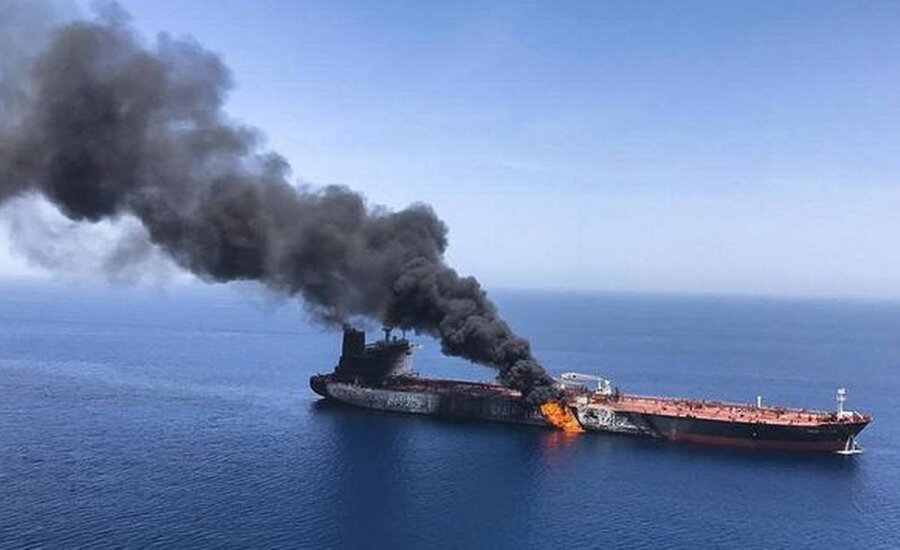
In recent years, hybrid warfare has developed into a major regional and national threat, and threatens to become a global challenge. Hybrid warfare refers to a combination of conventional and unconventional warfare capabilities, used by non-State actors, along with non-military operations, which challenge mainstream military practice and strategic thinking.[1] These capabilities consist of, but not are limited to, actions such as applying diplomatic pressure, economic manipulation, and the use of non-State actors.[2] Hybrid warfare actors tend to escalate vertically or horizontally activities. ‘Vertical escalation’ refers to the ‘intensity’ of actions when using any one of the five instruments of power, namely, ‘military’, ‘political’, ‘economic’, ‘civil’, and ‘informational’ (MPECI), while ‘horizontal escalation’ refers to the usage of more than one of these instruments. The choice of which (and how many) MPECI instruments are used by a hybrid warfare actor depends “on the capabilities of the hybrid warfare actor and on the perceived vulnerabilities of its opponent, as well as the political goals of the hybrid warfare actor and its planned ways to achieve those goals. As with all conflicts and wars, the character of hybrid warfare depends on the context”.[3] It has been observed that horizontal escalatory activities create a larger overall impact as compared to the vertical escalation of any given instrument. Hybrid warfare leads to a loss of control by centralised authorities in the region, causing a rise in conflict and regional instability, which can directly affect countries and partners that operate in the affected areas. Some of the most severely affected areas are West Asia and East Africa, which happen to be especially important for India’s energy supply. Much of India’s energy originates from West Asia, passes along the Arabian Peninsula, or traverses the Mozambique Channel. This paper will view the expression ‘security of energy’ as the physical and fiscal security of the actual flow of energy and attempt to analyse how national and regional instability caused by hybrid warfare has impacted India’s approach to ensuring the more commonly encountered expression, ‘security of energy’.
India’s Energy Bouquet
Three of the most important energy resources imported by India are coal, oil, and natural gas. India has witnessed a continuous rise in the imports of these commodities to meet India’s needs in terms of the production of electricity and consumption by other sectors such as the transport sector and the fertilizer sector. For example, Indian coal imports have steadily increased over time, and reached 209 million tonnes (Mt) in 2017 (see Figure 1[4]).
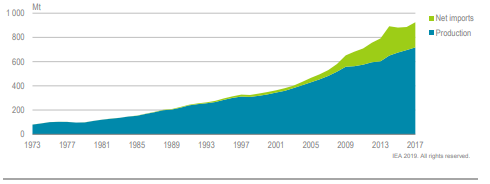
Fig 1: India’s Coal Supply Sources, 1973-2017
Source: India 2020: Energy Policy Review, 256, https://www.iea.org/reports/india-2020
India’s biggest suppliers of coal are Australia (for metallurgical coal), and, Indonesia and South Africa (for thermal coal). Due to the poor quality of Indian coal, imports from these countries are vital to meet the rising domestic consumption demands.[5]
India also relies heavily on oil imports— these imports were of the order of 4.2 million barrels per day in October 2020.[6] Net oil-imports have increased by almost 90% over the past decade. As of 2018-19, all three of India’s largest oil suppliers were located in West Asia, with Iraq supplying 970 kb/d (thousand barrels per day), Saudi Arabia supplying 800 kb/d, and Iran supplying 521 kb/d (see Figure 2[7]).
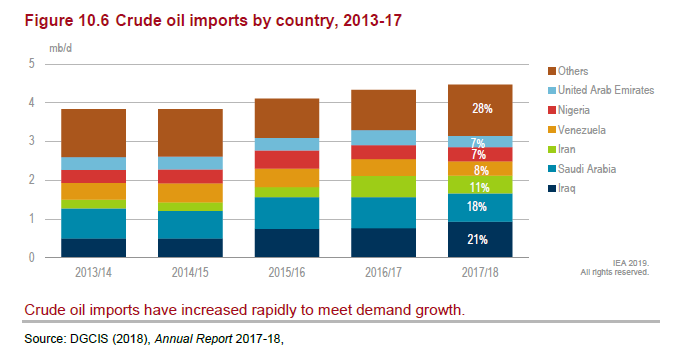
Fig 2: Indian Crude Oil Imports, 2013-2018
Source: India 2020: Energy Policy Review, 256, https://www.iea.org/reports/india-2020
In December of 2020, India’s largest suppliers were Iraq, Saudi Arabia, and the United Arab Emirates (UAE).[8] Two other major regions from where oil Indian imports are sourced are West Africa and South America, and much of this oil passes through the Mozambique Channel en route to destination-ports in India.[9] The oil industry remains extremely important for Indian trade, as while India is a net importer of crude oil, the country is also a net exporter of refined oil products, and has, in fact, been Asia’s largest exporter of petroleum products since 2009.[10]
While the share of natural gas in India’s energy supply and consumption has remained small, domestic supply has not kept up with demand. Hence, in recent years, imports of LNG have increased to account for around 43% of the total LNG consumed in the country. In 2017, 49% of India’s imports came from Qatar, once again underscoring the important role that West Asia plays in India’s energy imports. India has started to diversify its supply sources in recent years, including over 13 countries in 2017 (see Figure 3[11]). Other large suppliers include Nigeria, Equatorial Guinea, and Australia.[12]
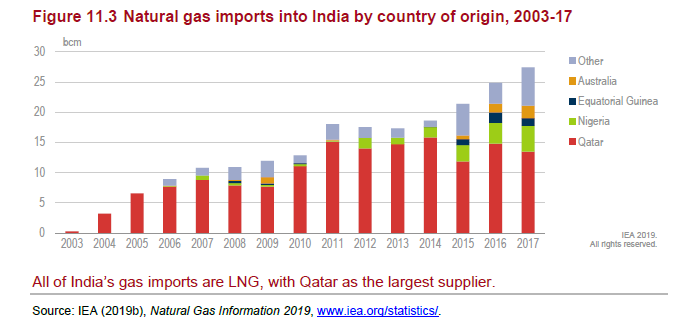
Fig 3: Natural Gas Imports into India, 2003-17 Source: India 2020: Energy Policy Review, 256, https://www.iea.org/reports/india-2020
It is apparent that India’s three biggest energy imports either originate from or pass through the shipping lanes in the proximity of East Africa and West Asia. The major routes are through the Mozambique Channel, around Yemen via Bab-el-Mandeb, or through the Strait of Hormuz (see Figure 4[13]).
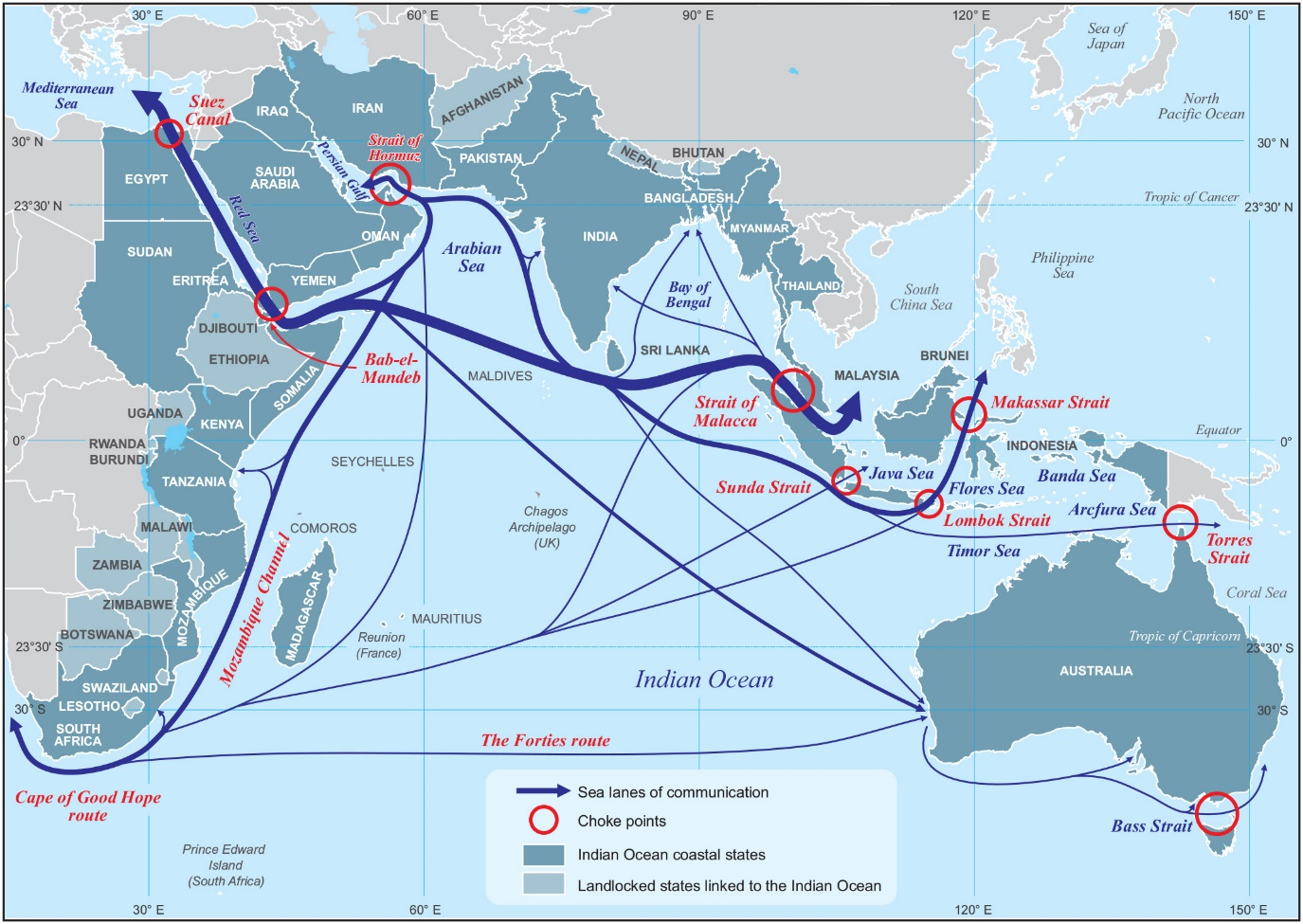
Fig 4: Major Energy Sea Lanes
Source: Denis Venter, Fluid Networks and Hegemonic Powers in the Western Indian Ocean
Due to the high degree of dependence on these energy imports, it is in India’s national interest to ensure its security-of-energy, especially as the source regions are subject to long periods of societal, ethnic and geopolitical instability. One of the growing threats stemming from this instability is hybrid warfare, which, in turn, adds to the overall instability. Instability in the maritime areas off Mozambique and Yemen, significantly impacts India’s security-of-energy calculus, and consequently, the origins, risks, and threats, emanating residing within this calculus need to be analysed.
The Mozambique Dilemma
Mozambique has a troubled history of conflict that owes its origins to the country’s independence movement, which began in 1964, followed by the post-Independence civil war, which lasted until 1992. The Rome General Peace Accords of 1992 led to the establishment of liberal democracy — an arrangement which, until the early-2010s, seemed to have stabilised the country and placed Mozambique on the path to development, with economic growth averaging around 8% per year in the period from 2001 to 2010.[14] However, after the discovery of large offshore gas reserves by oil consortia — such as the Anadarko Petroleum Corporation (now amalgamated into the Occidental Petroleum Corporation) of the USA, and Eni Energy Company (an Italian consortium) — in October 2011,[15] the peace deal broke down and hostilities between the two previously-squabbling political factions (RENAMO, the opposition party, and FRELIMO, the ruling party) resumed their violent competition for political power.[16] Hostilities continued until mid-2019, when the leaders of these factions signed another peace deal, which brought an end to the six-year long conflict. Along with the discovery of fresh gas-reserves around the Rovuma Basin off the Cabo Delgado region, there has also been a rise in Islamic extremism,[17] with the presence of insurgent factions, and, the Islamic State (IS) becoming active in the region. During this crisis, it was feared that RENAMO’s actions could result in the disruption, or loss of control of Mozambican energy deposits[18] and, by extension, export/trade routes — a concern that now also applies to terrorist activities in the same areas. RENAMO’s leader at the time, Afonso Dhlakama, had declared in 2017 that six provinces should be under their autonomous control. An attempt was made to legitimise this demand by claiming the support of the majority of the population of those regions. In 2016, RENAMO had claimed close to 67% of Mozambican territory, home to almost 70% of the total population[19]. This simmering instability poses yet another threat to the supply lines of Mozambique’s neighbours, as well as to those of India (see Fig 5[20]).
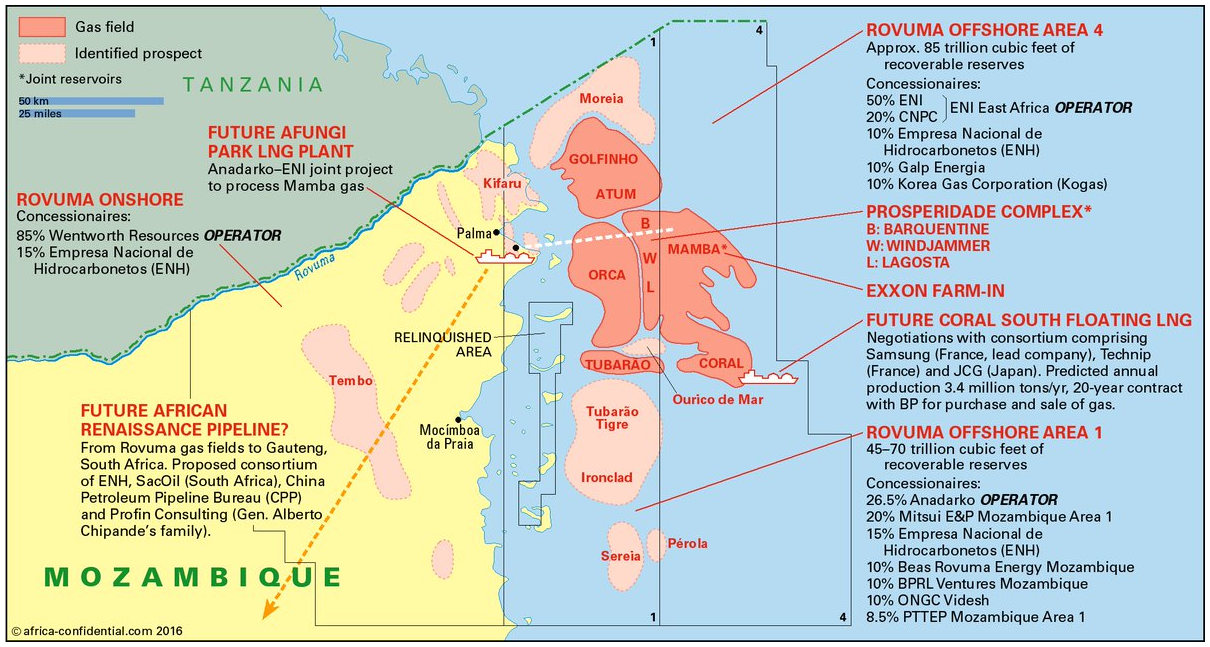
Fig 5: Proposed and Current Energy Projects in North-eastern Mozambique
Source: Liam Carmody, “LNG in Mozambique: Resources Saviour or Curse?”, https://www.futuredirections.org.au/publication/lng-mozambique-resources-saviour-curse/
Hostile actions taken by both RENAMO, and Islamic insurgents have destabilised the region and raised the risk of the disruption of supply lines. In particular, the proximity of RENAMO territory to the Rovuma Basin gas deposits could threaten both the exploitation and transport of energy. It also creates the possibility of extortion and/or hostage crises of critical personnel prospecting in the region, and even shipping originating or passing through the Mozambique Channel, carrying energy cargoes such as gas, coal, and oil. It hardly bears reiterating that Mozambique is extremely important to India’s security of energy. For example, Oil India Limited (OIL) and its foreign partners have secured a $15 billion investment to partially finance their LNG project in the Rovuma Basin[21]. Moreover, Indian energy supplies from South America and West Africa passing through this area run the risk of being impacted by growing instability in the Mozambique Channel and its immediate environs. Even gazing across a longer time horizon, India ought not to countenance instability in and around the Mozambique Channel. This is because future imports of natural gas from onshore and offshore gas fields in Mozambique, Tanzania, and Madagascar could significantly reduce Indian dependence on sources such as Qatar in the Persian Gulf, or Nigeria in West Africa. India has sought to diversify its import-sources of natural gas and Nigeria has been identified as an economically viable option. However, imports of natural gas from Nigeria will have to transit a number of unstable sea areas and choke points, such as the Suez Canal, the Red Sea, the Strait of Bab el Mandeb, and the Gulf of Aden. All in all, when seen through the lens of Indian investments in the region, the presence of non-State actors (NSAs) certainly threatens the sustainability of energy supply.
With the increase in the number of NSAs and Private Military Contractors (PMCs) engaging in hybrid warfare, the level of instability in the region is likely to increase further. On 05 August 2020, insurgents attacked the strategic port of Mocímboa da Praia (depicted in Figure 5), killed over 50 soldiers, sank a Mozambique Naval Ship with a rocket-propelled grenade, and, eventually took physical control of the port by 11 August 2020.[22] This had led to a more direct role for PMCs such as the Wagner Group and the Dyck Advisory Group (DAG). Hired by governments in the region for election security, counterinsurgency operations, as well as to provide security for sensitive sites, such NSAs often give short shrift to international humanitarian law, and their presence and involvement have raised concerns of human rights abuses in the region, accentuated by the lack of accountability of such groups. This latter characteristic of NSAs has also been utilised by governments to carry out actions against growing domestic insurgency. The accompanying “plausible deniability” has allowed States to deny responsibility for any State-sponsored abuse, since such abuse can be conveniently laid at the door of the PMCs. This growing instability and ethnic divisions amongst the local population have pushed more and more people into joining one or another insurgent faction, further destabilising the region.
Therefore, the presence and hostile actions of NSAs raises concerns regarding the security of energy, especially energy originating from the region or passing through the Mozambique Channel. For India, these can have severely adverse consequences as instability in the region and increase in hostile actions due to the growth of hybrid warfare will impact India’s security of energy, both ‘originating from’, and ‘transiting’ the Mozambique Channel and adjoining areas.
The Yemen Crisis
Following the resignation of President Ali Abdullah Saleh in 2012, the new regime struggled to unite various political factions. In late 2014, the Iranian backed Houthi insurgency morphed into a full scale civil war, with rebels capturing the capital of Sana’a in 2015 and forcing Abdrabbuh Mansur Hadi, the leader of the government, to resign.[23] The Arab League, the Gulf Cooperation Council (GCC), the UN, and the USA, all refused to recognise the new Houthi regime. While Hadi managed to escape to Saudi Arabia, the latter, along with some other countries (principally the UAE) announced that it was launching military operations in Yemen against the Houthi rebels.[24] These operations initially comprised airstrikes, which later escalated to a naval blockade and the deployment of ground forces into Yemen, and resulted in exchange of artillery and rocket fire across the border between Saudi Arabia and Yemen.
Control and influence of Yemen is currently divided amongst four major groups, resulting in significant instability (see Figure 6[25]). This situation is further complicated by the presence of the ISIS and Al-Qaeda, who control and influence large sections of territory in Yemen, and are engaged in offensive action against both parties to the conflict[26].

Fig 6: Territorial Control and Influence (as of Feb 2020)
Source: Kali Robinson, “Yemen’s Tragedy: War, Stalemate, And Suffering”, Council on Foreign Relations, https://www.cfr.org/backgrounder/yemen-crisis
Long viewed as a proxy war between Saudi Arabia and Iran, the conflict in Yemen has resulted in near-constant risk to critical supply lines, with the Houthi rebels widely thought to be supported by the Iranian regime,[27] a claim that Iran has denied. The Houthi-controlled areas are a constant target for military action by the Saudi-led coalition, and these actions, combined with Houthi rebel offensives, endanger shipping through the Red Sea and the Gulf of Aden. Even civilian ships (flying the flag of countries of the Saudi coalition and their allies) have been targets of attacks, such as that of July 2018, when Houthi rebels attacked a Saudi-flagged civilian oil tanker, the MT Arsan[28], and, of December 2020, when the MV Hasan, a ‘Sierra Leone’-flagged ship heading to Oman was attacked.[29]
This conflict has seen hybrid warfare being used against Saudi Arabia and its allies. For example, UN investigators had previously warned that Houthi rebels had acquired advanced drones with estimated ranges of over 900 miles.[30] This input proved prescient when, in September 2019, airborne drones attacked Saudi Aramco oil installations in Eastern Saudi Arabia, with the Houthi rebels claiming responsibility for the attack.[31] This attack exposed a new dimension of the threat to the security of energy in the region, and was of special concern and relevance to India, whose energy lines from West Asia and the Red Sea (see Figure 7[32]) were shown to be extraordinarily vulnerable.

Fig 7: Passage of Resources in Western Asia
Source: Gregory Aftandilian, “In Yemen, Egypt Balancing Its Interests”, The Arab Weekly, 17 April 2015, https://thearabweekly.com/yemen-egypt-balancing-its-interests
This new threat would, in all probability, adversely impact shipping in maritime choke points such as the Strait of Bab-el-Mandeb and the Strait of Hormuz, by targeting shipping in an extremely cost-effective manner. Mitigation of such a threat requires the development and fitment of suitable countermeasures on warships to provide protection to merchant shipping. Such countermeasures would also have to be added to the design of future warships. A single successful strike, or even a serious attempt at a strike, could be enough to disrupt shipping in the area, either due to blocking or restricting available space in existing navigable areas by damaging or sinking of a ship. This could lead to shipping avoiding the area and, instead, choosing the longer passage via the Cape of Good Hope. The impact on energy lines originating from the area would be even greater as the risks to such shipping would increase, resulting in an increase in insurance premiums, and hence, in the initially final cost of the energy. This also brings to the fore the challenges arising from plausible deniability, making it difficult to identify and assign responsibility to any specific NSA or even to a State one. This was noticeable in the two Gulf of Oman incidents in 2019, where Iran was blamed but could not be conclusively proven to have been responsible (and hence accountable) for the attack on four commercial ships and two oil tankers, through the alleged use of limpet mines.[33]
Two-thirds of India-bound oil, and half of India’s LNG imports pass through the Strait of Hormuz.[34] Any disruption in the import of energy will impact India, with the worst-case scenario being a shortage of such severity and duration that it leads to an actual energy crunch. Additionally, there is a danger of terrorist groups and/or NSAs acquiring advanced and cheap-to-produce asymmetrical warfare capabilities, which would significantly enhance this threat.
Mitigation Avenues
To address the above issues, India needs to continuously examine how to reduce the threat to the country’s security of energy. As India has good relations with most of the players, both intra and extra regional, a continued benign approach is probably the most appropriate overall policy-approach.
India’s grand strategy in the Indian ocean has been based upon five Hindi words all beginning with the sound “Ess” – Sammaan (respect), Samvaad (dialogue), Sahayog (cooperation), Shaanthi (peace) and Samriddhi (prosperity).[35] India’s stand on strategic autonomy and respect for the sovereignty of other nations have been cornerstones of the country’s foreign policy. Hence, India has, more often than not, adopted a stance of remaining carefully neutral in its approach to conflicts and internal strife of nations and has always advocated peaceful resolutions. This approach has stood India in good stead, as manifested in the Non-combatant Evacuation Operations (NEO) undertaken in Lebanon in 2006, and in Yemen in 2015, wherein Indian warships were permitted to enter the war-torn ports and evacuate Indian citizens as also foreign nationals.[36]
Maintaining a neutral and benign approach would ensure that Indian investments, such as those made by ONGC Videsh in partnership with companies such as Saudi Aramco, ADNOC or SABIC remain safe. In comparison, the awarding of exploration rights in the Rovuma Basin to Oil India Ltd and its partners requires the existence of stable and friendly government to assure success, security, and support of the Indian venture. India could offer benign assistance that supports nation-building through the medical, education and basic infrastructure routes, to name just a few.
The Indian Navy’s mission-based deployments[37] also add to the acceptability of India’s presence in the region as they support the perception of India as a ‘preferred security partner’[38] and ‘first responder in the maritime domain’.[39] This acceptability stems from the inherent flexibility of warships, which enables Indian naval ships to be seamlessly switched from whatever mission they might be undertaking to one involving disaster relief efforts and the projection of India’s soft power. An example of this was the mission to Port Beira in Mozambique, where Indian ships were diverted to render assistance and provide dry provisions, epidemic-related medicines, clothes, and ready-to-eat meals in the aftermath of Cyclone Idai.[40] Other notable examples are Operation RAHAT, involving the evacuation of both Indian and foreign nationals from Yemen after the recommencement of hostilities in the country,[41] and Operation SAMUDRA SETU, involving the evacuation and repatriation of Indian citizens from the Maldives, Sri Lanka, and Iran, stranded there as a result of travel-restrictions ensuing from the COVID-19 pandemic.[42] This was an immense success in a number of ways, not the least being that there was not a single case of COVID positivity amongst any of the hundreds of personnel, naval and civilian, throughout the operation. These operations showcase the benign role of the Indian Navy, its ability to adapt to the situation, and its flexible organisational capabilities.
Conclusion
For India, assuring the security of its energy supplies is vital for the country’s economy. Towards this end, India has engaged in efforts to increase its standing in the region by working hard and visibly to enhance stability and reduce tensions in times of crisis, thereby becoming a strategic partner to other countries whose own lines of energy supply countries transit through the subregions involved. All this is inextricably linked to India’s principal maritime interests. However, the rise of hybrid warfare in areas critical to India’s energy supply has resulted in increased risks for India’s continued security of energy and has constrained India from taking on a more active role, especially in view of keeping its investments and supply lines safe.
This perhaps stems from cautiousness. First, so as not to endanger existing economic assets, and secondly to avoid India being perceived as a belligerent and having Indian assets perceptually positioned as legal targets, mainly by State actors. As seen in the ARAMCO incident, energy resources are not free from threat, and India has a vested interest — both strategically and economically — to ensure the safety of its investments and supply lines. The availability or supply of cost-effective weaponry and equipment aid the hybrid warfare capability of NSAs, especially when supported by regional powers. Iran, for example, has repeatedly been accused of providing groups such as the Houthi and Hezbollah with anti-ship and coastal-defence cruise missiles, as well as short-range ballistic missiles such as the several SCUD variants,[43] possibly with an aim to project power into the Strait of Bab el-Mandeb and its environs.
The maritime areas that lie off West Asia and East Africa are vital to India’s continued security of energy, and India needs to engage all nations, especially resource-rich ones within these areas, on multiple fronts. The very nature of hybrid warfare requires cooperative mechanisms to ensure that energy supply lines remain unimpeded and unaffected by regional tensions. India also needs to work on a policy on countering the challenges posed by such hybrid warfare, so as to ensure the security of its energy flows.
Hybrid warfare is difficult to address but an overall benign approach that focusses primarily on non-military measures that enhance goodwill, such as naval diplomacy, material and infrastructure support, and humanitarian aid, would probably yield the most attractive dividends for New Delhi.
No comments:
Post a Comment